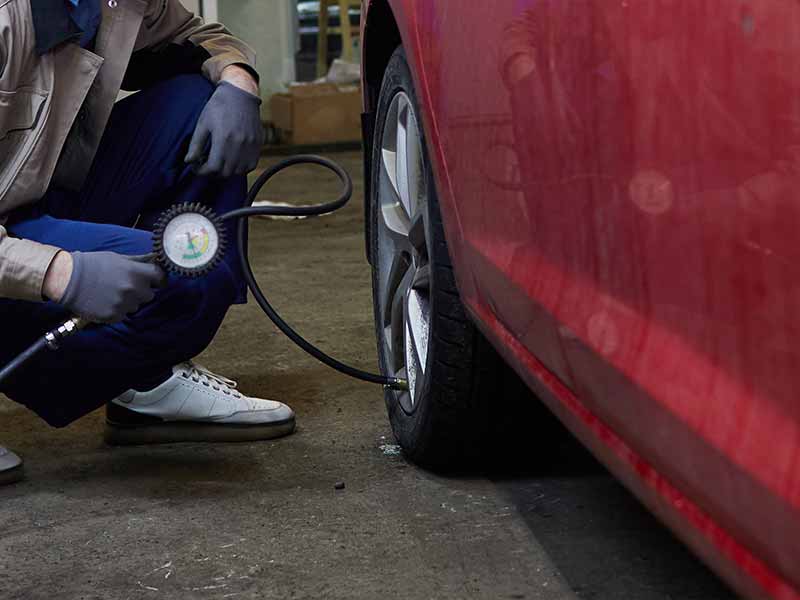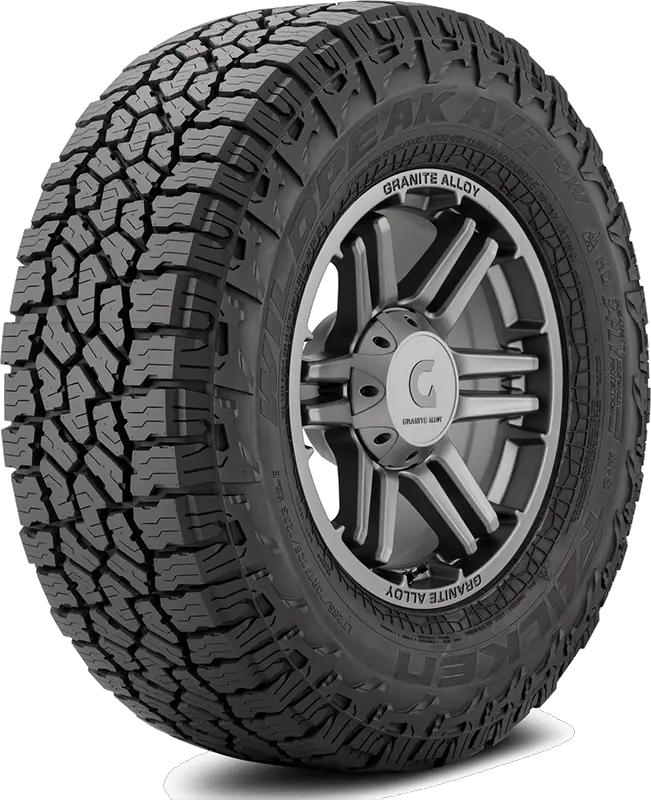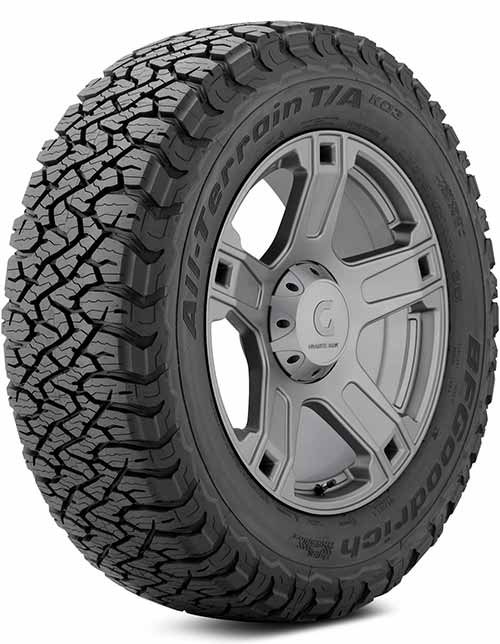Have you ever wondered if your tires are full of hot air—literally? Getting your tire pressure just right might seem like a mystery, but it doesn’t have to be. In fact, understanding the ins and outs of tire pressure could save you money, keep you safer on the road, and even help your car perform better.
How Much Air To Put In Tires?
How much air to put in tires is usually found in your owner’s manual or on a sticker inside the driver’s side door. Generally, tire pressure recommendations for passenger cars range from 30 to 35 PSI, but always check for your vehicle’s specific recommendations.
In this article, you’ll learn about understanding tire pressure, how to check it, and what the correct PSI for your vehicle’s tires should be. You’ll also gain insights into adjusting your tire pressure with seasonal changes and how to inflate your tires at a gas station.
Let’s take a closer look.
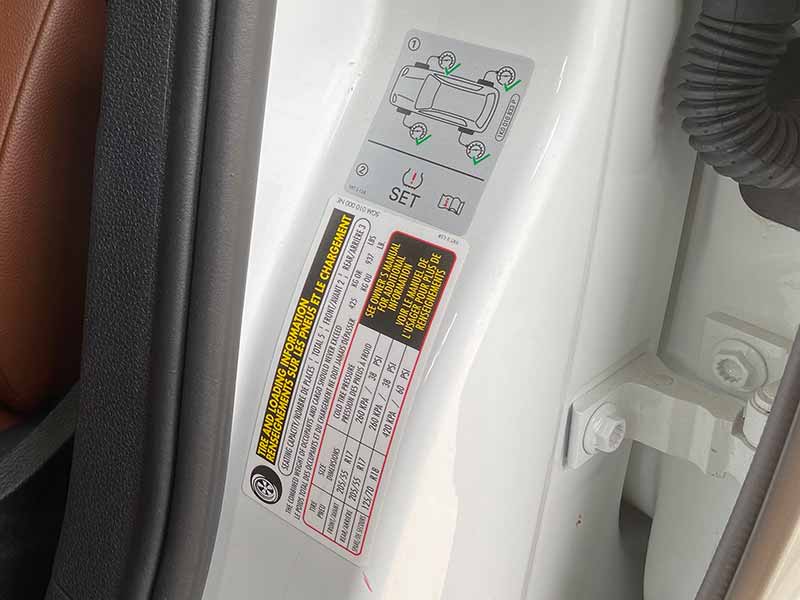
How to Find the Right Tire Pressure for Your Vehicle
Finding the right tire pressure for your vehicle may feel like you’re playing detective, but don’t worry! I’m here to help guide you on this quest.
The Owner’s Manual Is Your Best Friend
If you want to find the right tire pressure for your vehicle, your first stop should be the owner’s manual. This little book might look boring, but it’s full of useful info, including your vehicle’s recommended tire pressure. Just flip to the section on tires or maintenance, and you’ll find the info you need. Remember, this isn’t a random number—it’s carefully chosen by the people who designed and built your car or truck!
Your Vehicle Might Have the Info Too
Not all clues are hidden in books! Sometimes, you’ll find the tire pressure info right on your vehicle. Look for a sticker or plaque on the driver’s side door jamb, inside the glove box, or in the trunk. It will tell you the right PSI for both the front and rear tires, because yes, they can be different!
What If You Can’t Find the Info?
If you’ve turned your owner’s manual inside out and still can’t find the tire pressure info, don’t panic! A simple Internet search of your vehicle make, model, and year should lead you to the correct tire pressure. Just make sure the info is from a reputable source like a car manufacturer or automotive organization.
Tire Pressure Monitoring System (TPMS)
Most cars and trucks today come with a neat little feature called a tire pressure monitoring system, or TPMS for short. It’s like your vehicle’s own tire detective! If your tire pressure gets too low, the TPMS will turn on a warning light on your dashboard. But remember, it’s best to check your tire pressure regularly and not wait for the TPMS light to come on.
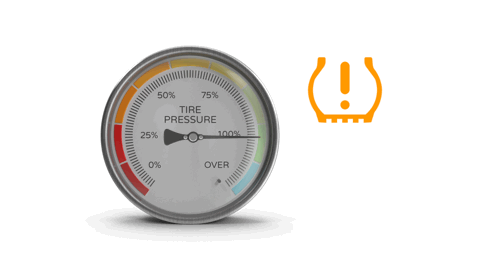
Importance Of Recommended Tire Pressure
When you have the correct tire pressure, your tires are working just the way they should. Your ride feels smooth and your tires don’t wear out too fast. It’s kind of like Goldilocks and her porridge, not too hot, not too cold, but just right!
The Deal with Overinflated and Underinflated Tires
- Overinflated Tires: When you put too much air in your tires, they become overinflated. Now, this might make you think your tires are super strong, but it’s not a good thing. Overinflated tires are harder and less flexible. They can’t grip the road as well, making your ride bumpy and less comfortable. Worse, they are more likely to get damaged when you hit a pothole or a speed bump!
- Underinflated Tires: On the flip side, when your tires don’t have enough air, they’re underinflated. This causes more of the tire to touch the road, which can cause the tire to wear out more quickly. Plus, underinflated tires make your vehicle work harder, so you burn more fuel. That’s bad news for both your wallet and the environment!
Max Pressure vs. Recommended Pressure
Now, here’s where it can get a bit tricky. Each tire has a maximum pressure, which is the absolute highest PSI that the tire can handle. You’ll usually find this info on the side of the tire. But—and this is a big but—that doesn’t mean you should fill your tires to the max pressure. It’s like a glass of water: just because you can fill it until it’s overflowing doesn’t mean you should!

Jaco Tire Pressure Gauge With Release Valve
How to Check Your Tire Pressure
So, you’ve become a master at understanding tire pressure and you know where to find the right PSI for your vehicle. Awesome! Now, let’s roll up our sleeves and learn how to check your tire pressure.
Step 1: Get a Tire Pressure Gauge
A tire pressure gauge is like a thermometer for your tires. It measures the PSI in your tires so you know whether to add or let out air. You can find one at an auto parts store, some gas stations, or online. They’re not expensive and they’re super easy to use!
Step 2: Wait for the Tires to Cool Down
This may sound weird, but you want to check your tire pressure when your tires are “cold.” That doesn’t mean they should be icy or chilly. In car-speak, “cold” tires are simply tires that have been sitting for a few hours or haven’t been driven more than a mile or so. Why? Because as you drive, your tires heat up and the air inside them expands, which can give you a higher reading. So, for the most accurate number, check your tires in the morning before you hit the road.
Step 3: Check the Pressure
Alright, time for some action! Remove the cap from the tire’s valve stem (that’s the little pin where the air goes in and out). Press the end of the tire pressure gauge onto the valve stem. If you hear air hissing, push the gauge on harder until it stops.
The gauge will then show you a number—that’s your tire’s current PSI! Note it down and repeat the process for all four tires. Don’t forget to screw the cap back onto the valve stem when you’re done!
Step 4: Compare and Adjust
Once you’ve got the PSI for all the tires, compare these numbers to the vehicle’s recommended tire pressure. If they’re the same, give yourself a high-five—you’re done! If your tires have less air than recommended, you’ll need to add some air. If they have too much, you’ll need to let some out.
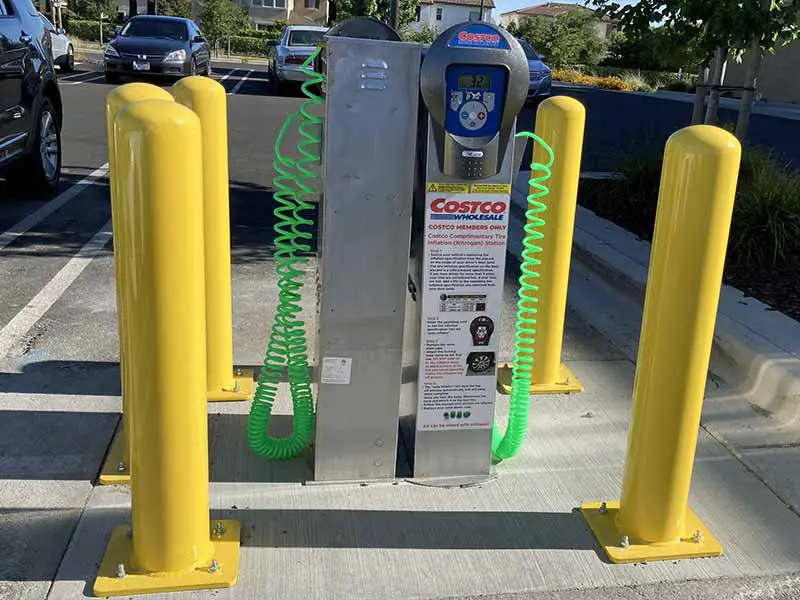
Inflating Tires at a Gas Station
Your tire journey has brought you to an exciting destination—the gas station! You’ve mastered the art of checking your tire pressure, but what happens when you need to add some air? Fear not, let’s walk through it step by step.
Step 1: Check Your Tire Pressure First
Before you go filling up your tires with air, it’s important to know how much air you need to add. Remember how we check tire pressure? It’s the same process. Use your tire pressure gauge to check the PSI of each tire when they are “cold.”
Step 2: Find an Air Pump
Most gas stations have air pumps, but you might need to ask where it’s located. Some places charge a small fee, so you might need some quarters. But some places offer free air, especially if you buy gas.
Step 3: Add Air to Your Tires
First, remove the cap from the tire’s valve stem. Next, press the air pump hose onto the valve stem and fill the tire with air. Some air pumps at gas stations have built-in gauges that will show you the tire’s current PSI.
Here’s a tip: the air pump might fill your tires faster than you expect, so add air in short bursts and check the pressure often. Remember, we don’t want overinflated tires!
Step 4: Check the Pressure Again
Once you’ve added some air, use your tire pressure gauge to check the PSI again. If it’s now at the right PSI, great job! If it’s still too low, add some more air. If it’s too high, you can let some air out by pressing the pin inside the valve stem.
And don’t forget to put the cap back on the valve stem when you’re done!
Remember the Spare Tire
While you’re at it, don’t forget to check the pressure of your spare tire as well. It’s often forgotten, but it’s always there for you in a pinch, so make sure it’s in good shape too!
Resources
Below are some links you may find helpful when learning about tires
Final Thoughts
The right tire pressure for your vehicle can be found in your owner’s manual or on a sticker in the driver’s side door. Tire pressure isn’t a one-size-fits-all number—every vehicle has its own specific needs.
The importance of maintaining the correct air pressure in your tires can’t be overstated. By regularly checking and adjusting your tire pressure, you can improve your fuel efficiency, increase your tire life, and, most importantly, ensure a safe ride.
From understanding PSI to checking your tire pressure, from knowing what PSI should be in your tires to adjusting your tire pressure with the seasons, and finally, to inflating your tires at a gas station, you’re now equipped to be your vehicle’s tire pressure champion. So, keep rolling safely, saving money, and taking the best care of your tires.
Good luck and happy motoring.
